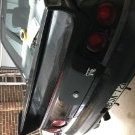R33: (gts-t) Series 1 And 2 Differences
Announcements
-
Similar Content
-
Latest Posts
-
Some of the photos from the aurora taken on my s24u. Night mode doing the heavy lifting.
-
By Murray_Calavera · Posted
@RA708 All good mate. Once you get your first car and can get hands on, that's when you'll really start to learn. There are a million channels worth watching on youtube, but I'd like to make a recommendation. Check out the project binky series. Just a little bit of modding happening there, I think you'll find it interesting https://www.youtube.com/@BadObsessionMotorsport -
How could you tell??/??/???/? Yeah I got no idea what I'm talking about haha. I'll be on P's soon. Yeah I figured that would be the case. Just wanna start learning to see how stupid of an idea it is. In general, I want to know so I can mod in future. It's interesting to know. Thanks!
-
By drifter17a · Posted
yeah i know some flex is expected as crank pulls on belt but was getting ocd
-






Recommended Posts
Create an account or sign in to comment
You need to be a member in order to leave a comment
Create an account
Sign up for a new account in our community. It's easy!
Register a new accountSign in
Already have an account? Sign in here.
Sign In Now